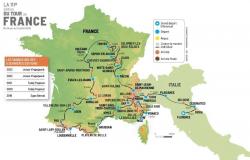site: Archaeological Museum of Siena (Siena).
The European Archeology Days are arriving in Siena, which will be held on the weekend of 14th to 16th June.
For the occasion, the National Archaeological Museum of Santa Maria della Scala has chosen to exhibit to the public an important piece once belonging to the Bonci Casuccini collection which is the subject of restoration.
In detail, it is a so-called Etruscan bronze “graffione”, dating back to between the 5th and 4th centuries. to. C., formed by a handle and a horizontal bar on which inclined prongs or ‘arms’ are placed. An instrument that has had various interpretations in the past, but which today scholars believe was used for lighting, through the use of protocandles or ropes soaked in flammable material passed around the hooks. The specimen falls, in the classification made by Vittorio Mascelli, in the second type identified, which is distinguished from the first (characterized by prongs arranged around a ring) by the presence of the horizontal bar. It should be noted that, in addition to the piece undergoing restoration, the Sienese museum preserves a second “graffione” of the same shape, coming from the Chigi Zondadari collection.
The gravure was already known to Ranuccio Bianchi Bandinelli, who in the Clusium (1925) gives an accurate description of it: “A tool which must probably be considered a hand-held candelabra, probably of ritual use [… ] some other examples of these instruments are preserved, more or less well preserved [… ] the Casuccini specimen is the most intact of the known series, missing only a third hook in the middle of the bar”. It should be added that, before the intervention, the object was covered in layers of encrustations and was fragmentary in one of the lateral arms.
The exhibition of the graffiti acts as a moment of ongoing documentation of the restoration work. The works, conducted by the restorer Nora Marosi, involved the removal of harmful and inconsistent degradation products from the surface. Once a thorough mechanical cleaning had been carried out, the detached prong was glued. Finally, the surface was treated with corrosion inhibitors and covered with protective layers to prevent possible future attacks.
Once the interventions are completed, the scratch can be displayed in comparison with the example from the Chigi Zonzadari collection and will be the subject of further in-depth analysis by specialists.
Featured image
scratch under restoration





